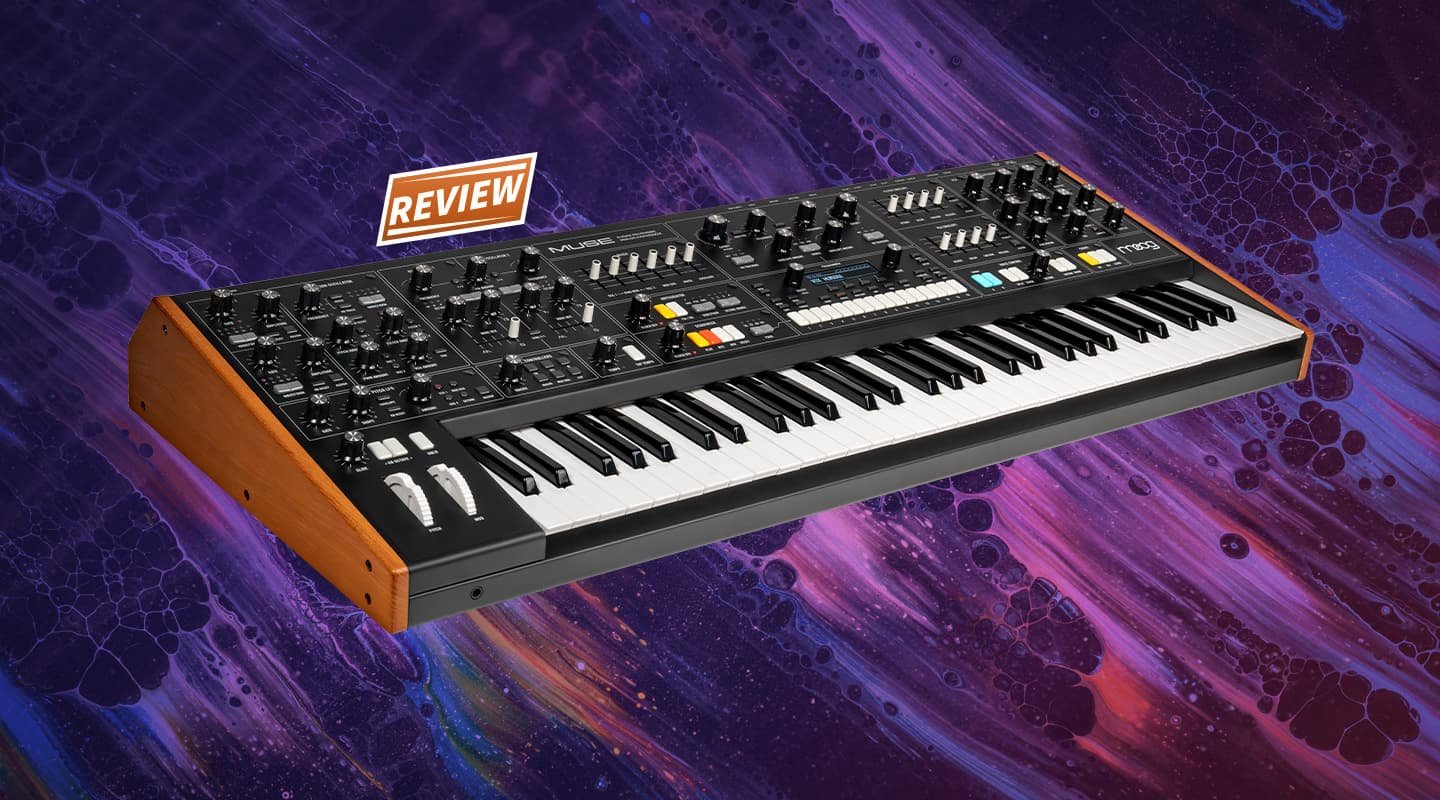
28 Nov Review: Moog Muse — AudioTechnology
Loading up the Moog Muse into the back of my old hatchback, it occurred to me that the synth is probably worth more than my car. And that’s okay – hatchbacks are a dime-a-dozen, a polysynth from Moog is altogether more rare and interesting. And to be fair, it’s a lot more affordable than its sister poly, the Moog One, which came out in 2018 and is worth more than a
Once the Muse was carefully chauffeured home to the test studio, there were no more thoughts of cars. The only thought was about getting it plugged in and seeing what it can do. Oh, and finding a sturdy place for it to live, because at around 15 kilograms, the Muse will not be happy on that cheapie keyboard stand every music room seems to have hanging around.
Thankfully, it’s not just heavy in the way that many old synths can be, it’s genuinely well made and feels solid across the board – from the wood side cheeks to the Fatar 61-note semi-weighted keyboard with aftertouch, it’s a serious piece of kit with no shortcuts taken in construction. That includes the control panel too – it’s covered in knobs, sliders, buttons, rockers and little triangle toggles. The Muse uses all the tactile options available in a pleasingly retro way. Visually, it’s a slight departure for Moog but it’s logically designed. Different control options are used for different techniques or to differentiate signal flow across the front panel.
SYSTEMS GO
Turning the Muse on did give me a minor heart attack: in the 70 seconds it takes to power up, I thought I’d somehow broken it in transit. Thankfully, after a nerve-wracking wait, the Muse happily sprang to life complete with enough LEDs to earn a cameo in a sci-fi flick. It’s another reminder of the clever design that’s at play with this synth – it’s a modern digital brain controlling an analogue body. Moog even suggests that you allow it to warm up for a few minutes before playing it, which is as analogue as it gets.
One of the biggest drawcards of that digital brain is the ability to have banks of presets – allowing you to quickly jump around and audition sounds. It mightn’t seem like a big deal if you’re coming from a plug-in world, but when you roam through the Muse patches you begin to understand the impressive breadth of sounds it’s capable of. It also manages to swap through patches rapidly and with little lag or noisy overhanging notes, which is not always the case for analogue polysynths, even modern ones.
SOUNDS LIKE?
So what does it sound like? Whatever you want it to sound like, pretty much. It can give you the classic Moog basses or tearing leads but it can also give you wide morphing pads, plinky arpeggiations or crunchy percussion. It can deliver unhinged bleeps and bloops or surprisingly convincing electric pianos. With three oscillators, eight analogue voices and two timbral layers, it can really do it all.
The first few hours were spent enjoying the ability to play chords on a Moog, something that really hasn’t ever been an option. But it was when I started diving into the controls and tweaking some sounds that I started to discover what makes the Muse so impressive, and worthy of genuine consideration for anyone considering a serious synth in their setup.
The first thing is that it has a distinctive ‘sound’ without being restricted or defined by that sound. What that means is that while it displays all the best traits of Moog oscillators and filters, it isn’t constrained by it the way many synths are.
A DSI Rev 2 sounds great, but it always sounds like a Rev 2, no matter what combo of settings you give it. Somehow, the Muse manages to avoid this fate, which is a huge achievement. It makes it truly compelling as a single synth that’s capable of many different colours and shades in your studio or performance arsenal.

